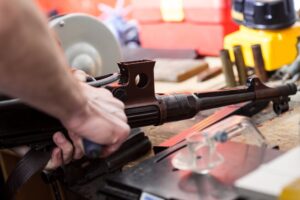The corset was first, followed by the girdle and then the modern-day brace. Fashion has evolved over the years and so has the shape of breasts. These undergarments provide modesty, support during activities, and enhance the female form.
Wacoal Bras Australia is worn by women today for the same reasons. Bras keep girls hydrated and offer support during intense exercise. Bras have evolved with fashion, and are now required for specific outfits.
The Benefits Of Being Bra-Free
Although most people wear one, research shows that bras are still very popular. Bras and breast cancer are linked surprisingly. Numerous studies have shown that tight-fitting bras, such as underwire bras, can reduce lymphatic flow. This may lead to lymph stasis. Breast restriction is when the lymphatic system becomes blocked by breast tissue. Research has shown that breast cancer may be caused by poor lymph flow.
There are many ways to support your lymphatic health at home, but women shouldn’t forget that a better bra or no bra could be an option!
Built-In Breast Support
The breasts and the surrounding chest tissue develop during puberty. Cooper’s ligaments, which are thin tissue found in the breast tissue and connect to the chest to support it, are called ligaments.
These ligaments can stretch over time and cause droopy breasts. Others believe muscle atrophy is also a factor.
The Best Bra Materials
Bras come in many styles, from plain Jane cotton white to lacy pushup bras. Here are some guidelines for choosing a bra.
You should choose a bra with breathable fabric (preferably organic).
Bamboo and organic cotton are excellent choices.
Pay attention to nickel closures and latex straps. These can irritate sensitive skin.
Breathable fabrics wick away moisture, keeping the chest area cool. Sweat toxins are eliminated by the body, so putting them in a bra that is too tight can make you uncomfortable and even worse. Many people believe that tight undergarments could be contributing factors to cancer, as they inhibit the body’s natural cooling process.
The Perfect-Fitting Bra
Surprisingly, many women wear poorly fitting bras. It’s possible for a variety of reasons but it is easy to fix. These are some things to remember when fitting bras:
- The bra’s band should fit snugly, but not be restrictive. A tighter band may be needed if the bra is slipping.
- The band may be too tight if it leaves red marks on the skin or bulges.
- The cups should not bulge out from the breasts.
- The bra should not look too large or puckered.
- A professional fitting can help those who are having difficulty finding the right bra.
Another tip: T-shirt bras and pushup bras that are padded a lot can make the breasts appear larger. This artificial manipulation of breast tissue isn’t always healthy. The sexiest, lacy and push-up bra you see in a store won’t necessarily be the best. It’s worth forgoing frills to get a comfortable and healthy bra.
Take A Look At Your Stage In Life
Menopause, breastfeeding, and pregnancy are all times when breast size fluctuates. These rapid changes can be accommodated by bras made of flexible and stretchy fabric. It will allow the breast tissue to move freely for lymphatic flow and detox.
The lymphatic system is not like our circulatory system, where the heart pumps blood. Instead, it relies on the body’s movement to ensure proper flow. A little bit of bounce in your bra can be a good thing. Dry brushing can also stimulate lymphatic flow.
The Best Bra For Active Activity
Jogging sports like horseback riding or running are more comfortable and offer firmer support. However, the fabric should be flexible and breathable. One study that involved 23 women of larger stature found that sports bras with wide straps were more comfortable than those with narrower, cross-backed straps. In a similar study, smaller-breasted women found that the cross straps were more comfortable than those with vertical shoulder straps.
Body Size
Larger cups are more comfortable and will prefer wider straps and more secure closures. This reduces the amount of weight that is placed on the neck, back, and shoulders. It could also cause back pain and strained neck muscles.
A study of postmenopausal women revealed that larger breasts and bodies tended to cause more pain in the mid-back.




















